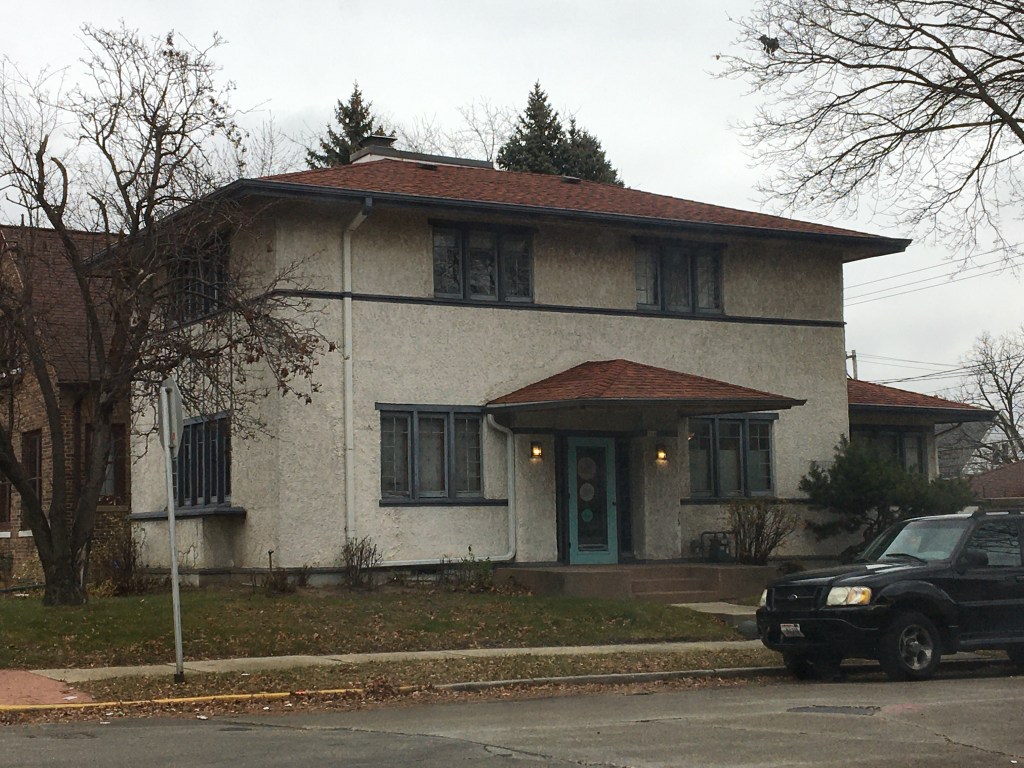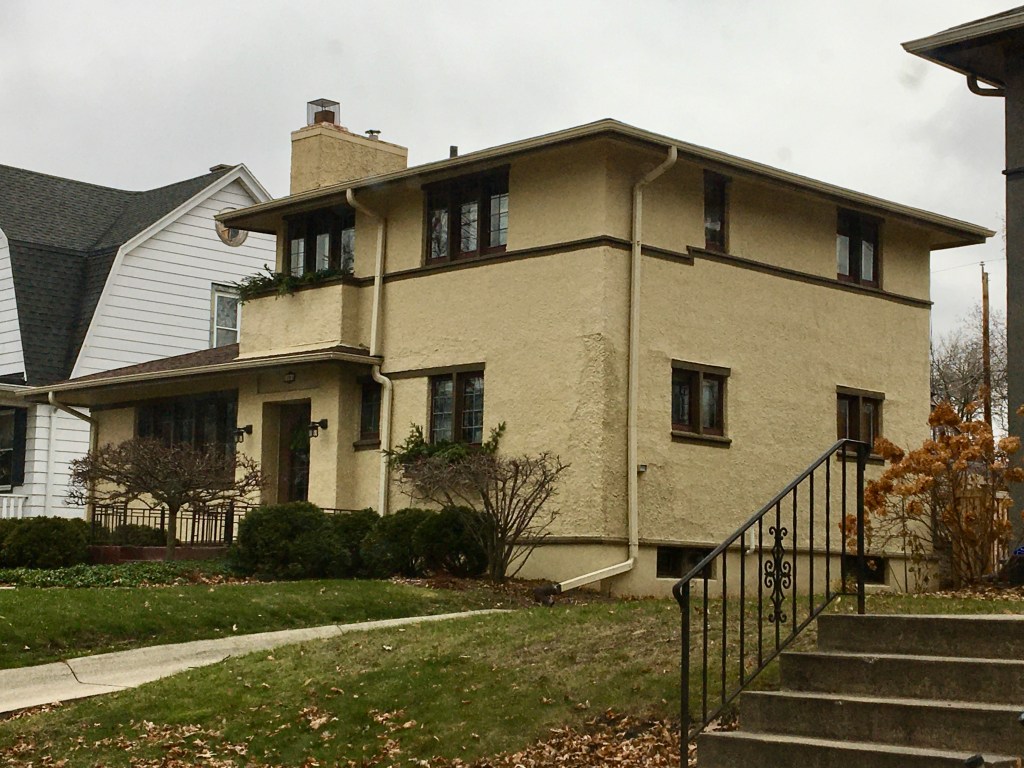One of the main storylines in my new book Frank Lloyd Wright’s Forgotten House is the dramatic unravelling of years-long relationships between Frank Lloyd Wright, his American System-Built Homes (ASBH) development partner Arthur L. Richards, and Wright’s assistant Russell (Barr) Williamson.
It is not a spoiler to say that after Frank Lloyd Wright sued Richards and cancelled the ASBH program in 1917, Richards and Williamson continued designing and selling Prairie Style homes around Milwaukee. Distinguishing those homes from Wright’s ASBH work can be difficult. Here is a clue.
Wright’s window designs featured canted footers and headers in the frames – with mirror opposite angles. The idea is that when you stand inside one of these windows, you enjoy an unobstructed view of the sky and the earth. The window seems larger than it is. And more light gets in. That can be seen below.

But to a previous post about the parts that would make this organic experience, design-minded commentators pointed out the obvious: the upward-canted header would be a catchall for water and eventually begin to leak. Indeed, it did. Answering a lawsuit over payments in 1919, the defendant Elizabeth Murphy declared that “owing to defective workmanship or material, water, during rains, has leaked through at several places in the roof and at several windows” shortly after her house was constructed. Today, those gaps are flashed – something Wright would have not liked.* On some other Wrightian ASBH homes the gap was filled with invisible trim.
Richards and Williamson were listening to Murphy’s complaints. They saw the flaw and decided that in their own Prairie adaptations, canted headers would be gone, though canted footers remained. The result is that homes confused as Wrightian can be distinguished by this mixing of conventional headers with unconventional footers. So some of Wright’s ideas made it onto Williamson’s early designs, though not all.
This can be seen in RBW’s Bellews home (1919) on 30th and National in Milwaukee (left) and on many of his Prairie Style designs in Wauwatosa, Wisconsin (right).
We love the struggle between something gorgeous but functionally-flawed and something functional but less organic.
Finally, if you’re on the hunt for lost Wright-designed American System-Built Homes, here is another arrow for your quiver.
*Correction: a student of Wright points out that “I don’t find Wright to be sparing in his provision for necessary flashing.” Indeed, Wright was practical if not sparse. I’ve corrected my generalization above.
About this blog: The Elizabeth Murphy House is a 103 year-old American System-Built Home and the protagonist in the book “Frank Lloyd Wright’s Forgotten House. What are readers saying?



One thought on “Correcting a Wrightian mistake – but at a cost”